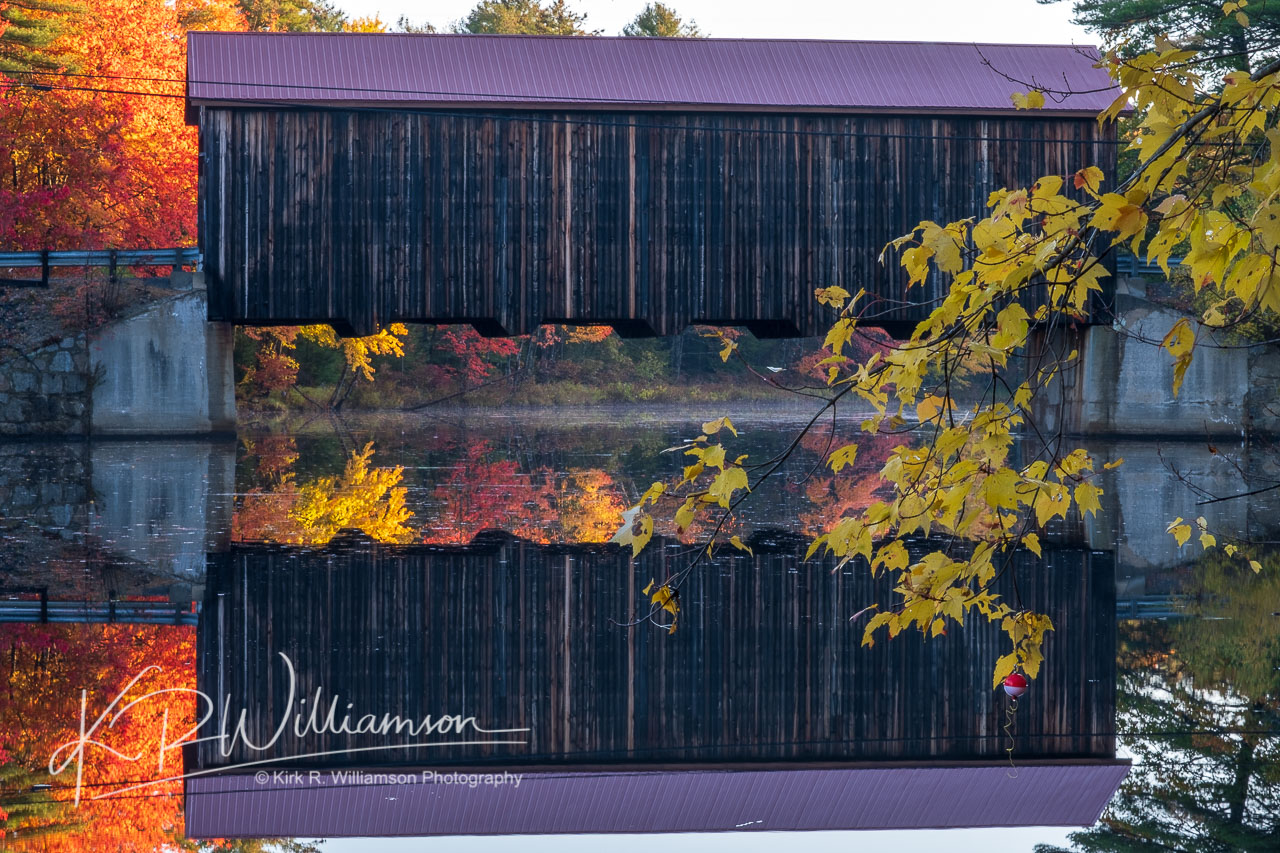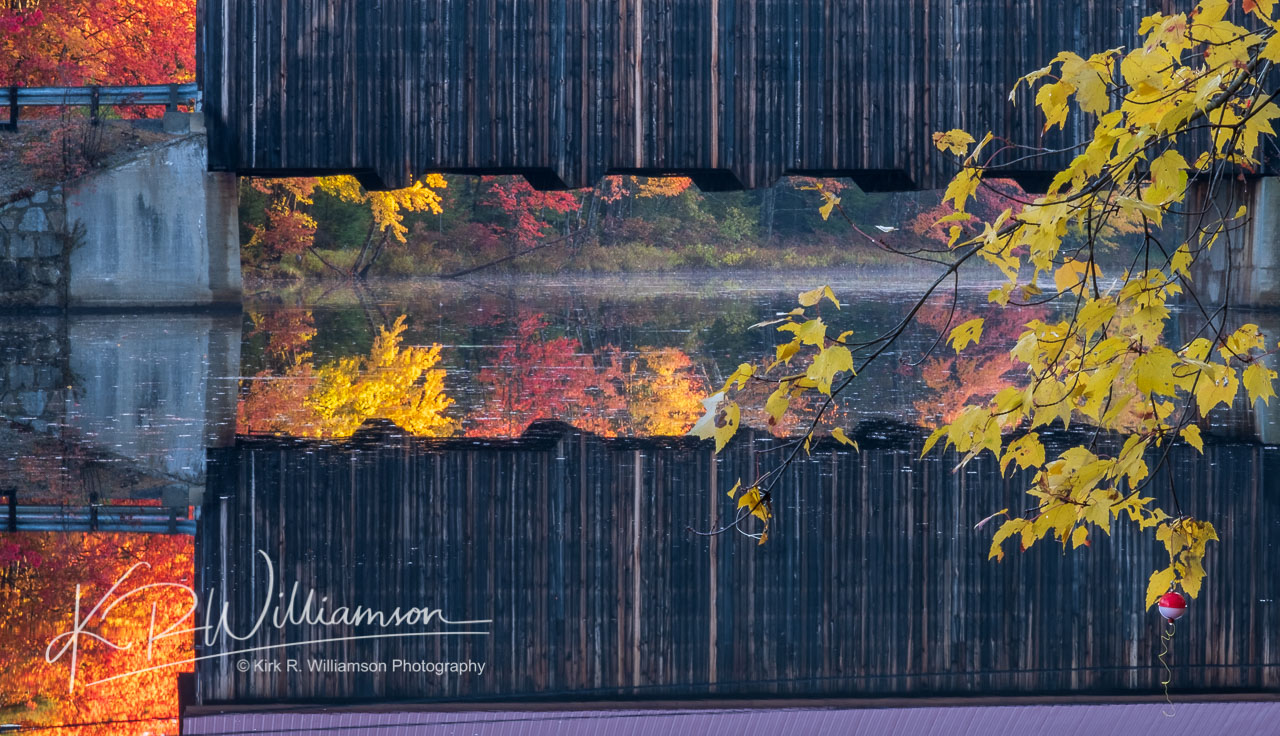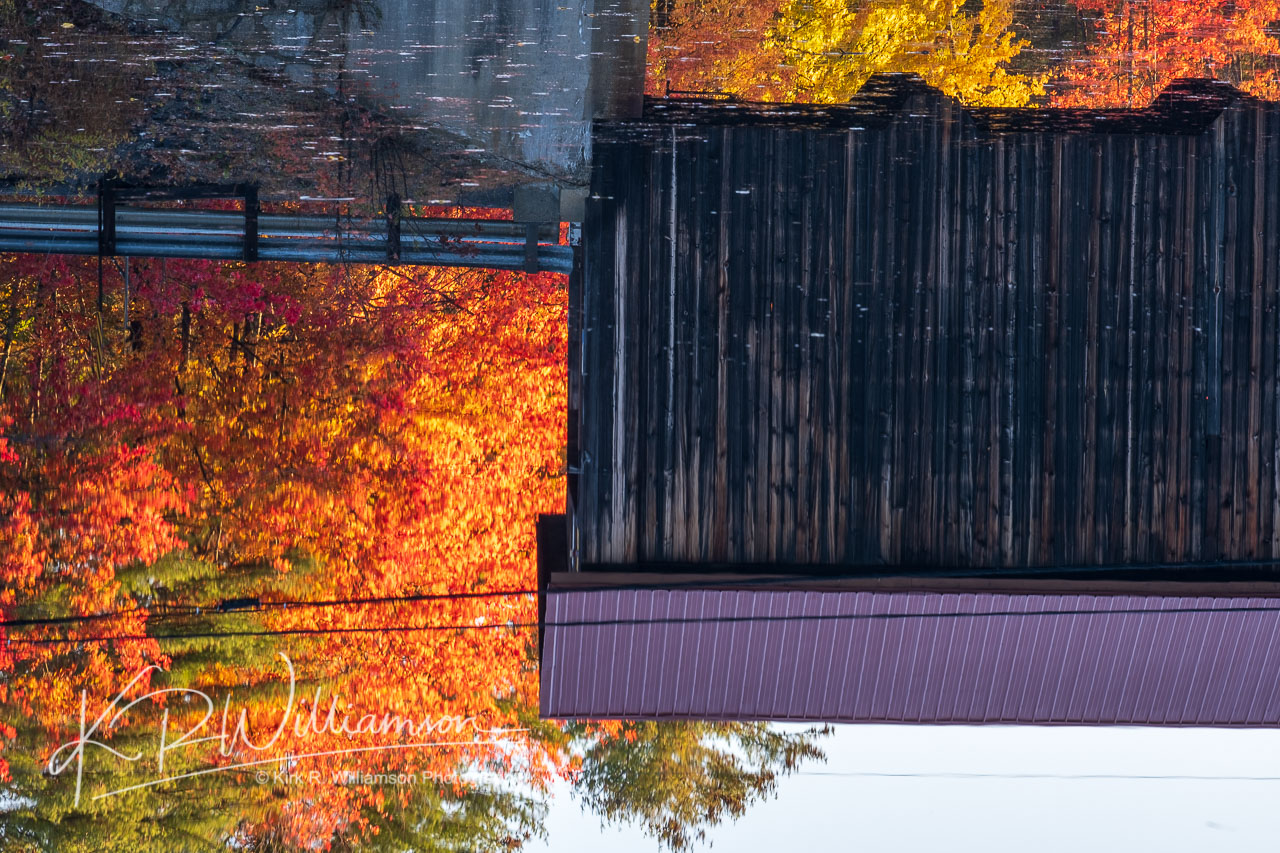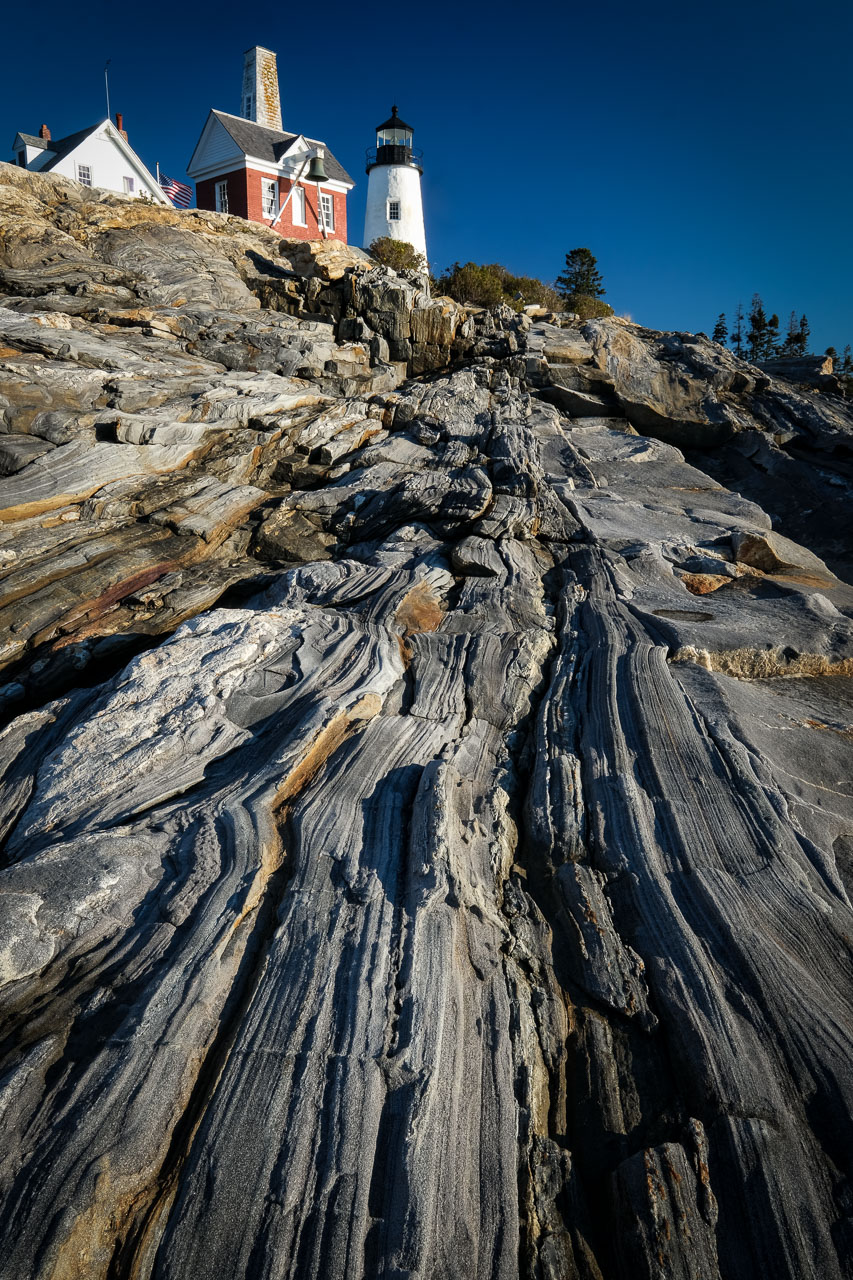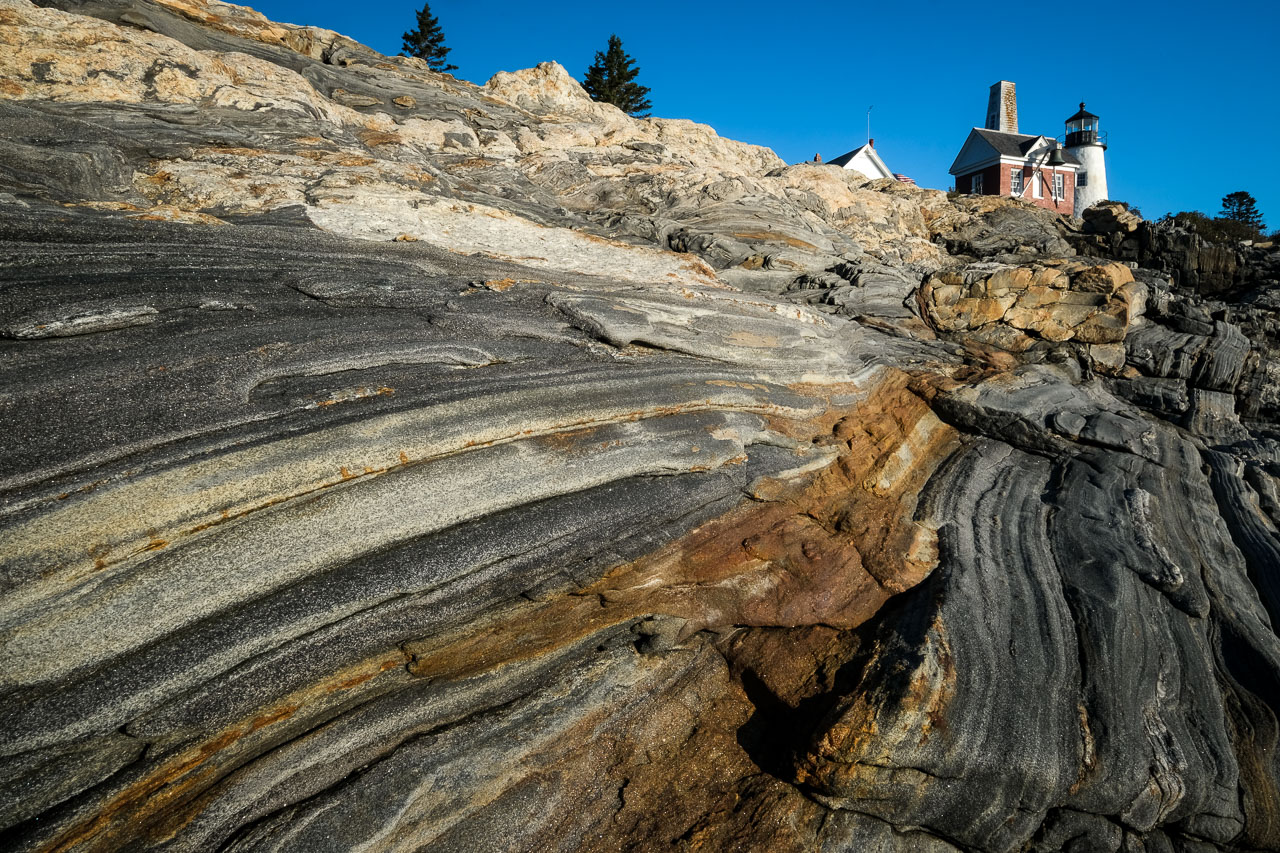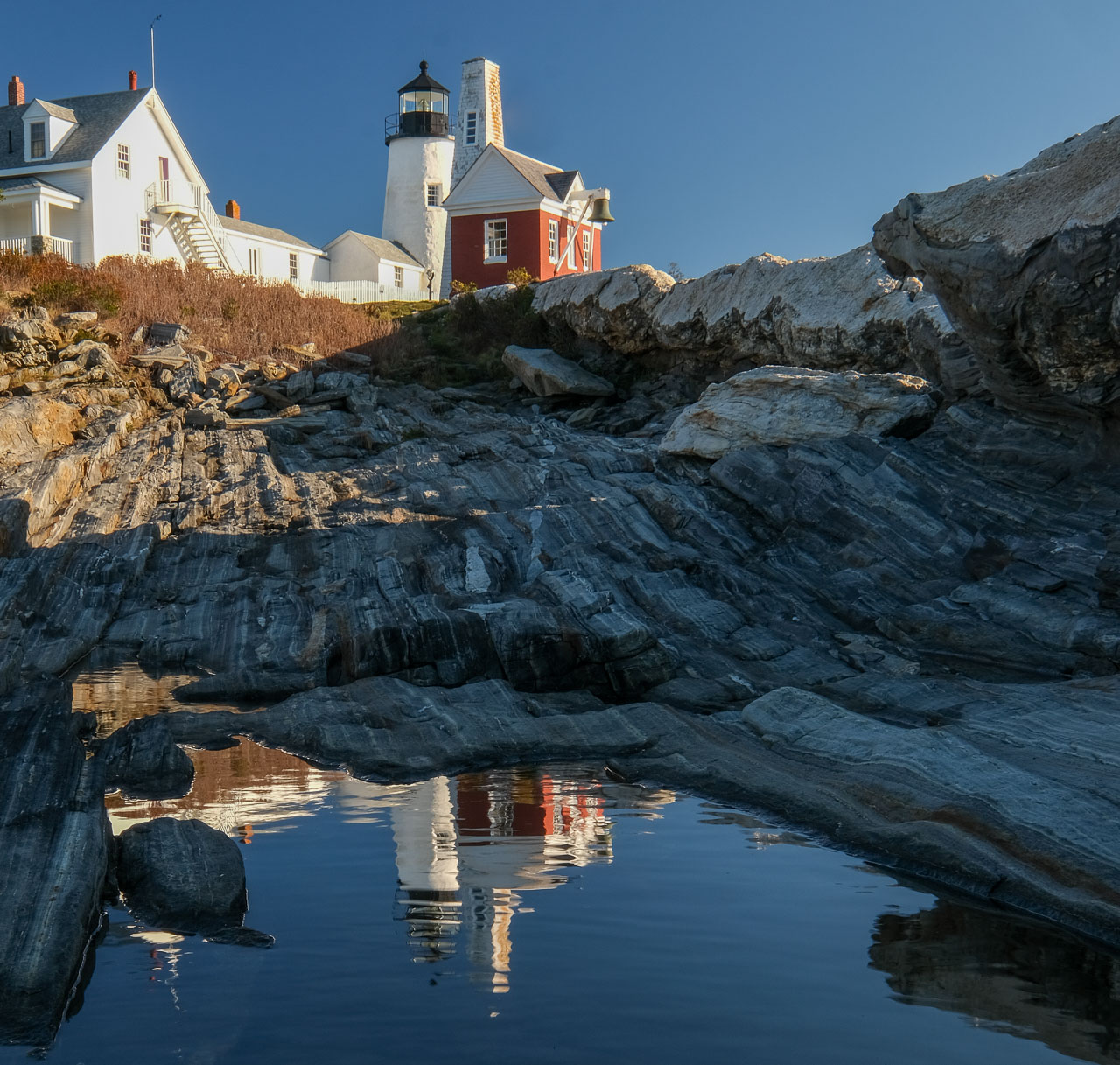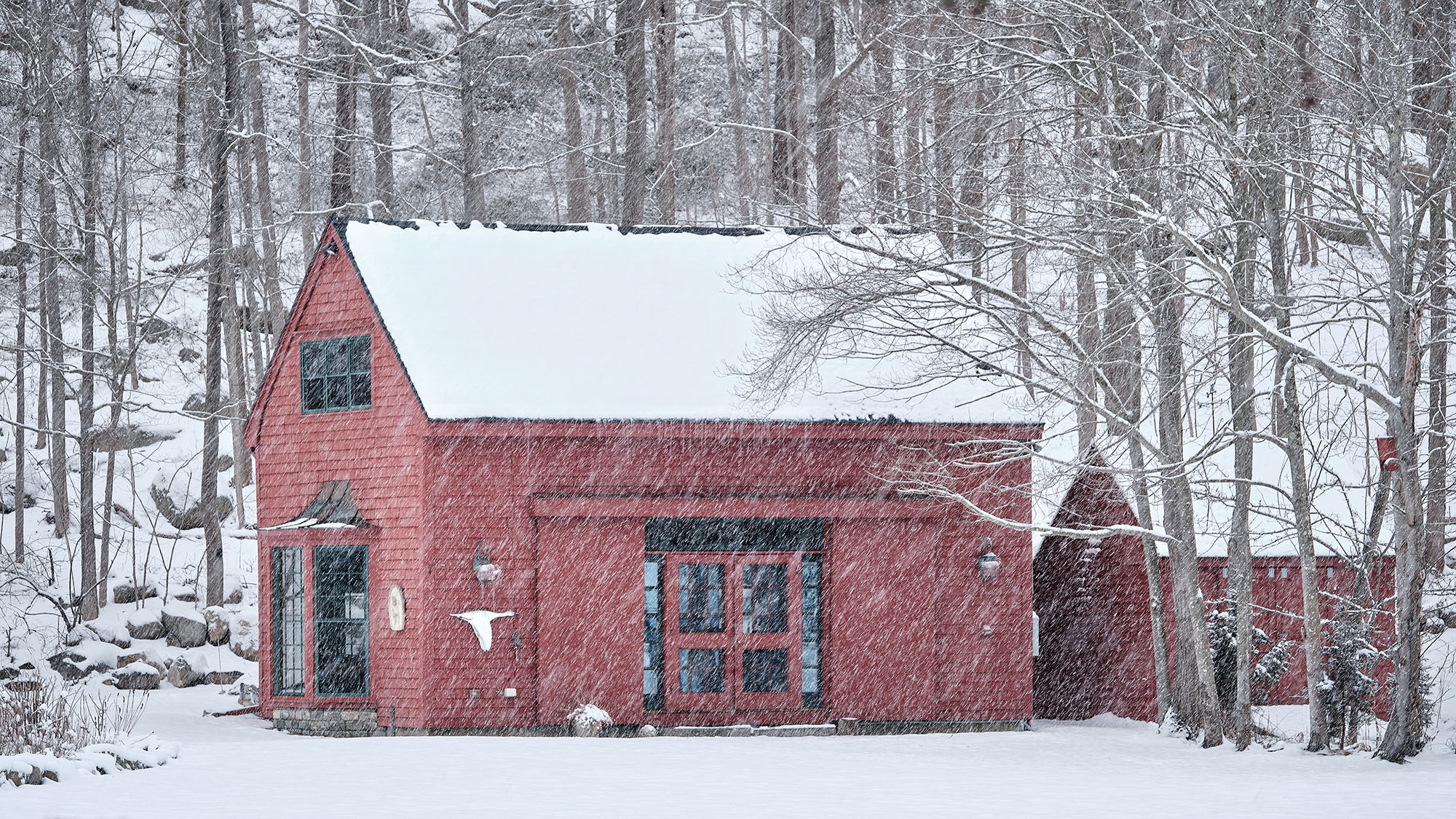
Landscape photography during the winter months can be very rewarding if correct pre-cautions are taken. Make sure you dress warm, plan your photo shoot, and make sure your gear is protected. If you follow these three simple rules you will make out just fine. The only caveat is the weather and what it can throw at you. Recently I went out on an excursion in a light snowfall knowing that the weather would not be a problem and that my gear was protected. With my Fujifilm X-T3, X-H1 and all the lenses I was using all weather resistant I knew that there would be no issues with water.
The first location I have photographed before but not in the snow. It used to be a boat house but is now a private residence. It has always been a wonderful red color and it stands out against falling snow. I made several different images of it but the one above is the one I wanted. The image was made at 1/50s to catch the movement of the snow. This is always a good idea to show a little movement with snow unless your goal is to make the snowflakes smaller and to create a different feel to the image.
Lens choice is also a critical factor when shooting in the snow or any kind of adverse weather. A wide angle lens will not show any compression of the snow at all an unless it is snowing heavily with large flakes it will be hard to show the snow in action. The image below was made with a 24mm equivalent lens and you can see that the snow is less visible.
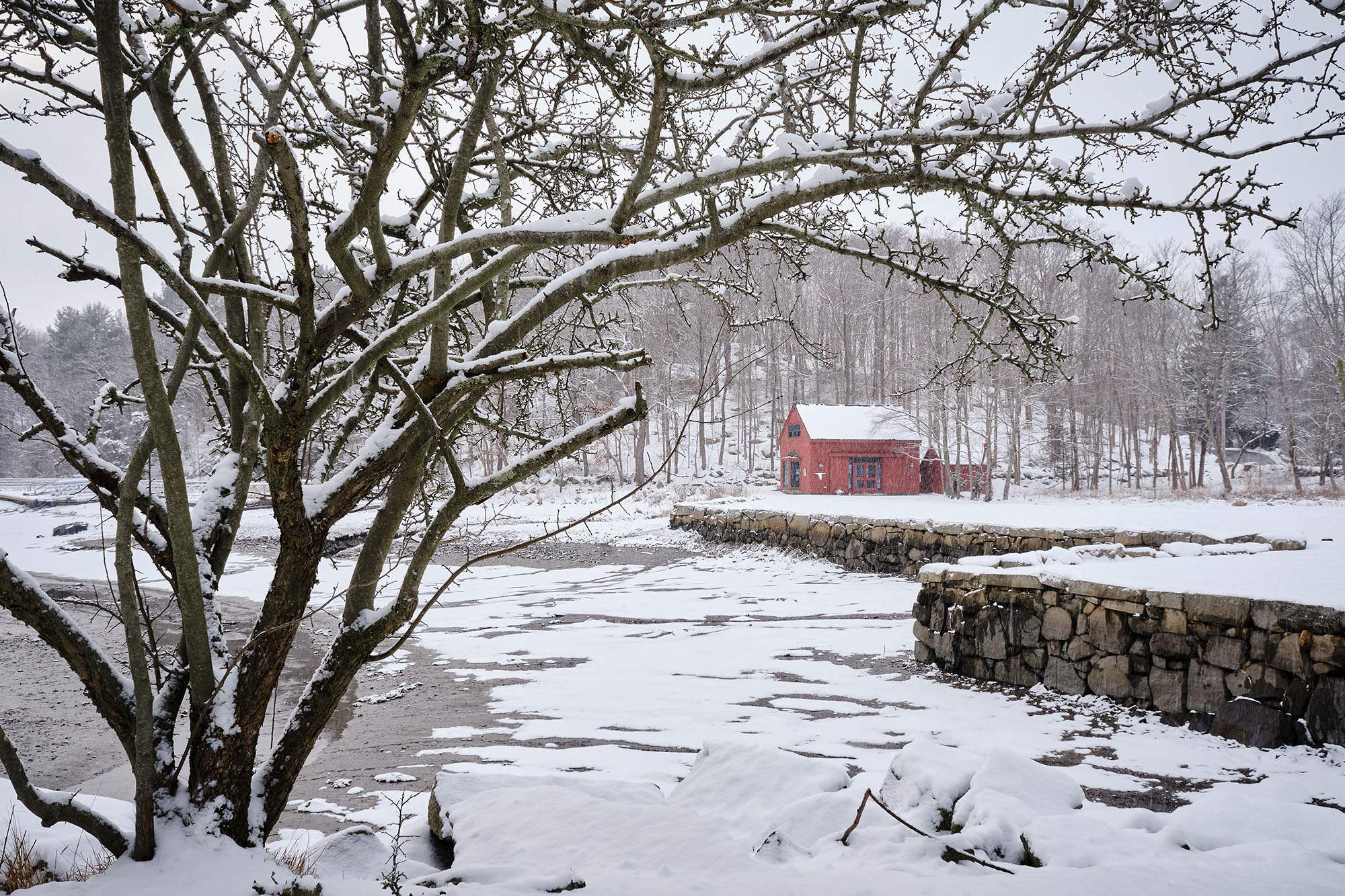
My next location for this shoot was to go over to East Gloucester at the head of the harbor and shoot some fishing and lobster boats with a very long lens to compress the snow even more. I also shortened the shutter speed to between 1/125 and 1/200 to stop the snowflakes instead of a longer shutter speed which shows motion. I wanted a more painterly look to them.
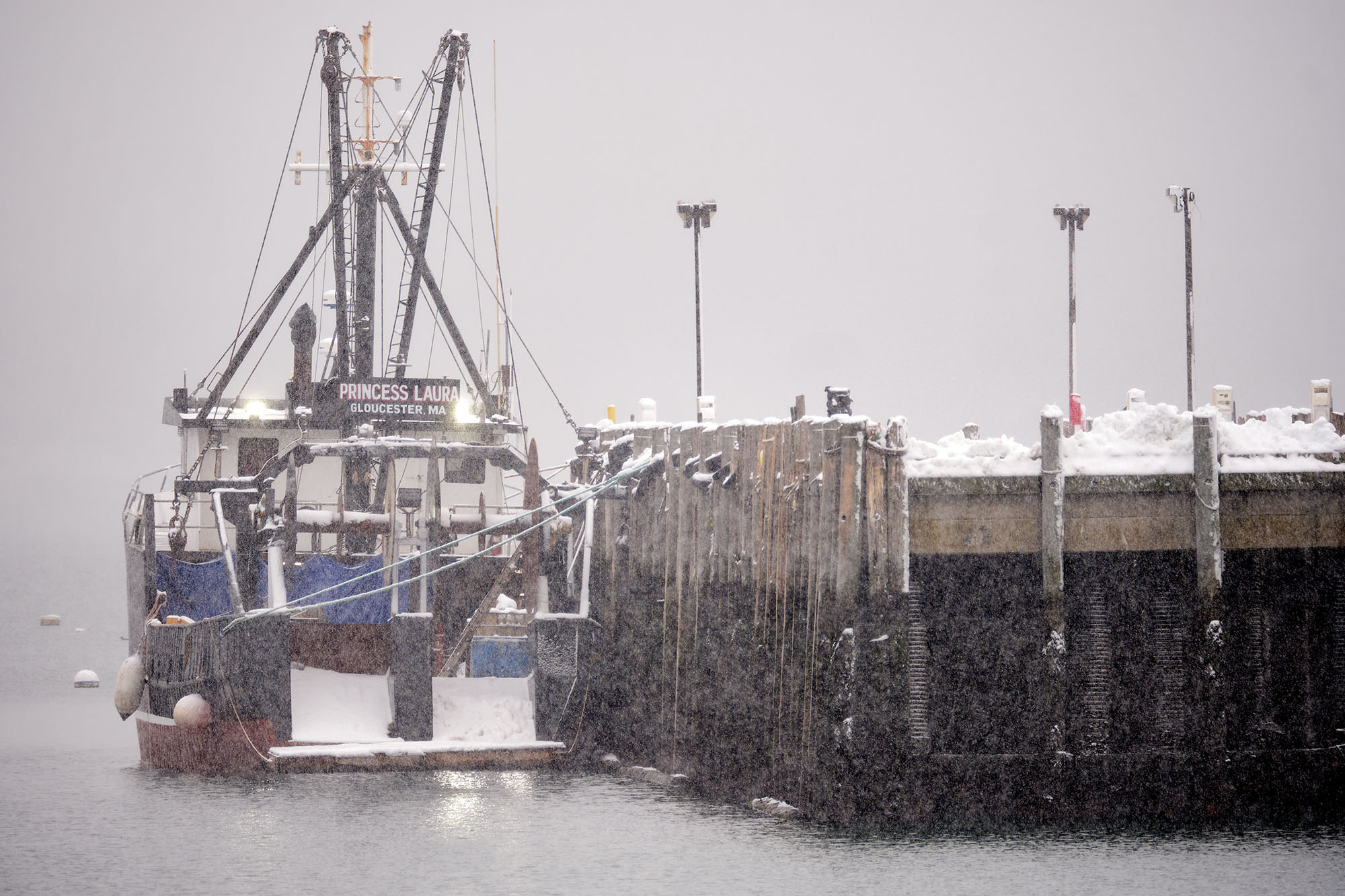
I love this shot of this fishing boat as the snow is compressed enough that it looks like it’s really snowing hard and the gray of the sky and snow is in stark contrast to the boat, it’s super structure, the pilings and lights of the pier. The 100-400 really did it’s job in this instance. Next I was looking for a Christmas card shot for a client for next year and was looking for lobster boats in the snow. Again the 100-400 was the best choice.
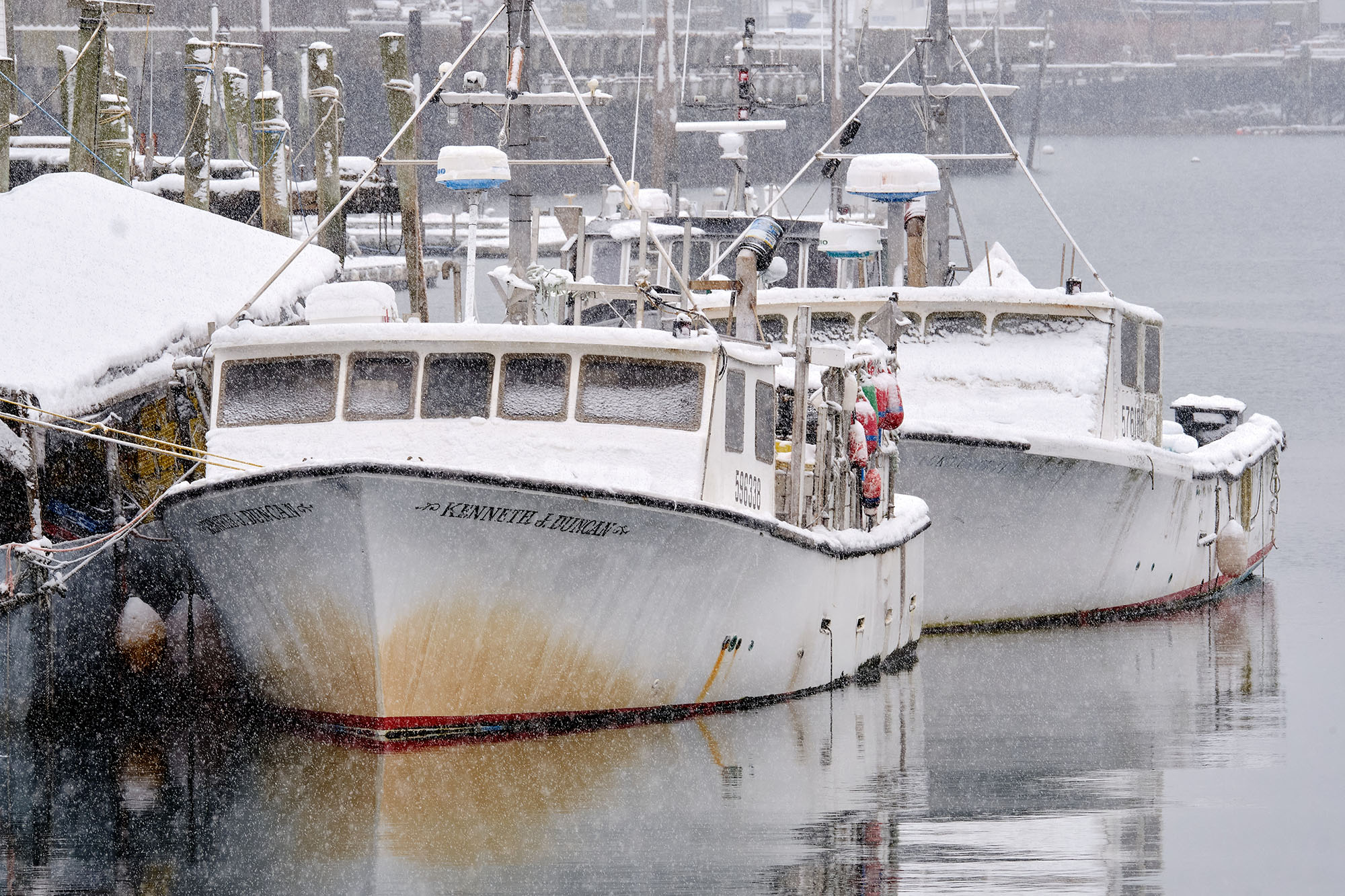
Another shot I love that shows the snowflakes stopped in action giving this image and almost painterly look. The compression with this focal length is outstanding and really pulls the scene together for me.
So go out in the snow keeping these suggestions in mind, Bring the right gear, stay warm and enjoy! Check out the video below on my Youtube channel.

